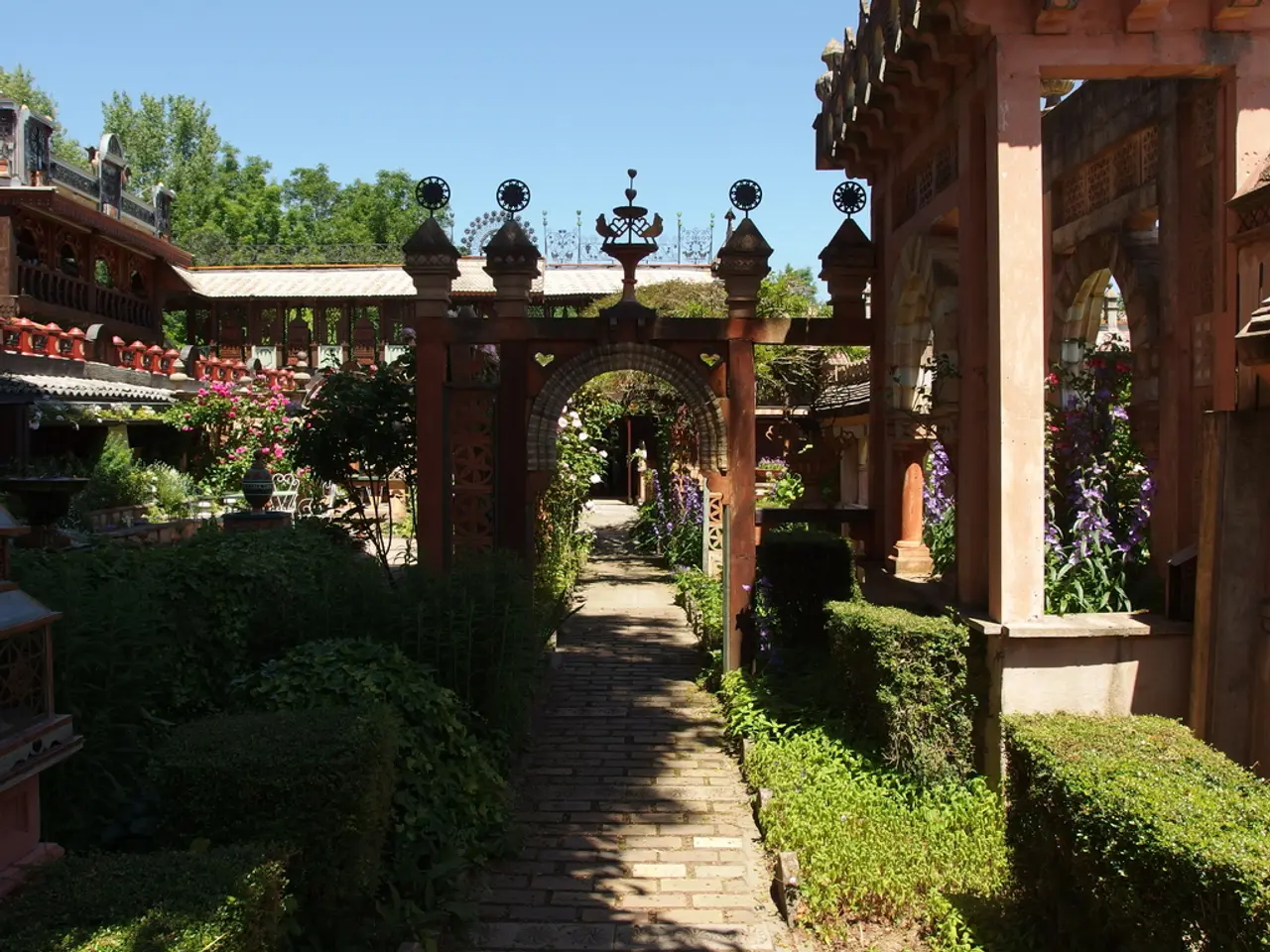Cultivating Hyssop: A Step-by-Step Guide
Hyssop, scientifically known as Hyssopus officinalis, is a fragrant, herbaceous perennial that adds a splash of colour and aroma to any garden. This semi-evergreen shrub, a member of the mint family, grows to about 1 to 2 feet tall and wide, producing prolific dark-blue flower spikes and pleasantly aromatic dark-green leaves[2].
**Growth and Propagation**
Hyssop can be easily propagated by seed or stem cuttings. Seeds can be sown directly outdoors or started indoors, with seedlings planted when large enough to handle[4][2]. Cuttings can also be taken to propagate new plants, allowing controlled multiplication.
**Ideal Soil and Sunlight Conditions**
Hyssop prefers well-drained soil and can tolerate fairly poor soil conditions, though it thrives best in rich, fertile soil[1][2]. It requires moist soil but can tolerate some dry periods once established. Hyssop needs full sun for at least 6 hours per day to grow healthily and bloom prolifically[2]. Although it can tolerate part shade, it optimally performs in sunny garden spots.
**Sowing and Pruning**
Seed can be started either early spring indoors or sown outdoors after the last frost. They should be kept moist until germination, with seedlings transplanted once sturdy enough[1]. Cut hyssop flowers back immediately after blooming to encourage a second round of flowering. Annual light pruning is advised to keep the plant healthy and extend its lifespan[2][1].
**Caring for Your Hyssop Plant**
Leafhoppers are unlikely to affect the growth of a hyssop plant significantly unless they are present in huge numbers. Predators such as birds and ladybirds can help control leafhoppers in a garden. To maintain a vigorous, blooming hyssop plant, follow the sowing, pruning, and care guidelines provided.
**Using Hyssop in Cooking and Distillation**
Hyssop is ideal for using in hearty stews and goes well with meat such as lamb or chicken, making a good alternative to sage[3]. Now, hyssop is more commonly used in the distillation of certain liquors and to give the famous green color to absinthe. The leaves can be harvested in the morning, after any dew has dried, and stored by drying or freezing. To dry hyssop, cut stems of leaves, gather into bunches, and hang in a dark and well-ventilated area. To freeze hyssop leaves, strip them from their stems, place in a plastic bag, and store in the freezer.
**Historical Uses of Hyssop**
During the Middle Ages, hyssop was used as a flavouring in soups and stuffings. It also has a long history of medicinal use, with hyssop tea said to be an excellent tonic for a cough or cold, but should be avoided if pregnant[3].
**Hyssop Varieties**
Hyssopus officinalis f. albus has white flowers and a spreading habit, while Hyssopus officinalis subsp. aristatus has compact growth and funnel-shaped dark blue flowers.
In conclusion, with proper care and attention, hyssop can become a beautiful and useful addition to your garden. Its fragrant leaves and attractive flowers not only enhance the aesthetic appeal of your garden but also provide a flavourful ingredient for various dishes and a historical component in the production of certain liquors.
Reference(s): [1] https://www.almanac.com/plant/hyssop [2] https://www.rhs.org.uk/plants/35514/Hyssopus-officinalis/details [3] https://www.bbcgoodfood.com/howto/guide/hyssop [4] https://www.gardeningknowhow.com/edible/herbs/hyssop/hyssop-growing-guide.htm
The gardener can consider incorporating Hyssop, a fragrant herb, into their home-and-garden, particularly in the home-and-garden section dedicated to home-and-garden plants like other perennials. With proper sunlight, soil, and care, this semi-evergreen shrub will thrive and become a beautiful addition to the lifestyle, personality, and aesthetic appeal of the home-and-gardening space.




